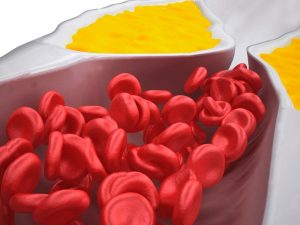About Meditation
Meditation is a practice that many of us don’t know how to do properly or take seriously, but if done the right way it can enhance everyday experiences. Dhyana is a practice used to get in touch with one’s consciousness, and is useful for gaining perspective, letting go of negative thoughts, or removing oneself from a stressful situation.
By the Numbers
18 million US adults practice meditation (2012 NHIS survey).
927,000 US children practice’d meditation (2012 NHIS survey).
Meditation in the Workplace
The workplace can be a stressful, sometimes confrontational, environment. If you find yourself overreacting, you might need to find a quiet place to recenter. To achieve inward reflection you need a place where you can be undisturbed. Ask your boss if you can use a conference room if you don’t have your own office. Sitting and focusing inwardly can relieve anger, stress or anxiety. Meditation is heavily centered on breathing, so breathe deeply and regulate your breaths.
Meditation tips
A Carnegie Mellon University study concluded that 25 minutes of meditation could alleviate stress, with results after three consecutive days. Here are some tips, as outlined on the Yoga International website, to get you started:
- Turn inward: Meditation is an art that requires finding stillness within yourself. It might be uncomfortable at first, as meditation centers on stillness and self-control. There is a common idea that mediation requires you to completely clear your mind; instead, it requires careful cognition and filtering of wandering thoughts. Think about why these thoughts are flooding in and carefully sift through them to turn back inward.
- Cultivate stillness: Meditation is a mind-body connection and is often connected through yoga methodology. Keep your body in an upright posture. Make sure the space around you is uncluttered (an empty conference room is recommended for at-work meditation). Bring a cushion to work. Maintain awareness of your body and your breathing.
- Pushaway negative thoughts: Meditation is an escape from negativity and manifests your goals through positive imagery.
- Practice makes perfect: For many of us, the principles of meditation seem counterintuitive (especially at work). It is important you continue to practice. Think of your mind as you would any muscle and that in order to strengthen it you must work on it. Meditation is like a sport and the more you work on it the easier it will come to you. Don’t become discouraged if you don’t see immediate results.
Does it Work?
Studies meditation as a stress management technique in the office, have shown positive results. One study showed employees had reduced symptoms of depression, hostility and anxiety. The study concluded that incorporating worksite stress management programs such as meditation could save on worker health costs and increase productivity. Another study, however, showed no conclusive evidence that meditation had any psychological effect, but there was clear proof in decreased hostility. According to the National Center for Complementary and Integrative Health (NCCIH), studies have shown that meditation can be effective at treating:
- High blood pressure.
- Psychological disorders.
- Pain.
- Irritable bowel syndrome.
- Anxiety.
- Depression.
- Insomnia
In a 2012 study, NCCIH researchers found that out of 100 adults, the 50 who practiced meditation over many years had more folds on the outer brain (gyrification), thought to increase the brain’s ability to process information. In another NCCIH-funded study, evidence suggested that meditation affected activity in the amygdala (the part of the brain used to process emotions).
Blood Pressure, Stress and Meditation
Hypertension is the medical term for high blood pressure. Medications can lower blood pressure but lifestyle changes are also essential. An increase in stress can raise blood pressure and meditation can be a positive antidote. Hypertension has been referred to as the “silent killer” because often there are no visible symptoms. Common symptoms include:
- Headaches.
- Shortness of breath.
- Dizziness.
- Chest pain.
- Heart palpitations.
- Nosebleeds.
According to the World Health Organization (WHO), hypertension is the most preventable cause of heart disease and stroke worldwide.
By the Numbers
- More than one in five adults worldwide has raised blood pressure.
- Complications in hypertension account for 9.4 million deaths worldwide annually.
- Hypertension causes nearly half of all deaths due to stroke and heart disease.
Hypertension can damage the heart and blood vessels within major organs, including the brain and kidneys. The following lifestyle changes, along with meditation, can help prevent hypertension:
- Eating healthier foods
- Avoiding alcohol.
- Physical activity.
- Avoiding tobacco.
Risks
According to the NCCIH, people with health conditions should talk to their primary healthcare provider before starting any meditative practices. There have been rare occurrences in which meditation caused or worsened symptoms for people with psychiatric problems such as anxiety or depression. Talk to your doctor if you think meditation could be an option.











